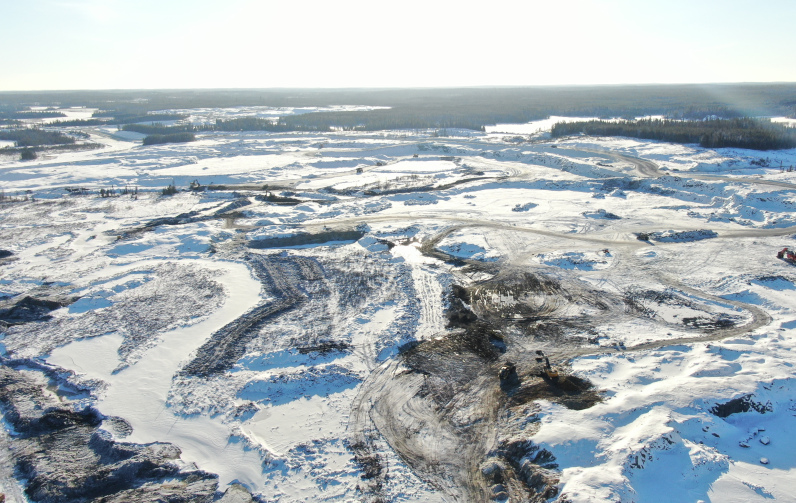With 87 per cent of creditors voting in favour of the arrangement, Laurentian University will continue to stay open for now. Courtesy of Laurentian University
On Sept. 14, a crucial vote took place that would dictate the future of Sudbury’s Laurentian University, one of Canada’s premier mining education schools. Due to insolvency, the post-secondary institution announced in February 2021 that it would be filing for creditor protection under the Companies’ Creditors Arrangement Act (CCAA). This financial crisis is considered to be a historical first, as Laurentian is currently the only publicly funded Canadian university to ever seek protection under the CCAA.
Votes by several hundred creditors were cast, resulting in 87 per cent of creditors in favour of keeping the school open and backing the proposed plan of arrangement.
As reported by The Sudbury Star, Laurentian University’s debts amount to more than $91 million in loans owed to three Canadian banks, with liabilities costing the school $321 million. The institution’s proposed plan of arrangement will allow the school to pay back only a fraction of the debts owed. Up to $53.5 million obtained from the sale of university real estate will be used to pay creditors.
If the plan had received a negative vote majority, the university’s real estate would have been liquidated, leaving countless staff members without jobs and students in need of transfers to alternate universities in order to continue their studies. When Laurentian first announced that it would be filing for insolvency, 69 undergraduate and graduate programs were forced to close. Additionally, 194 full-time workers were terminated.
The potential closure of Laurentian, one of Canada’s most prominent mining universities, could have been a critical moment for an industry that is seeing less student enrollment.
In the Mining Industry Human Resources Council’s National Outlook for 2021, results from a 2020 survey reflect that younger workers (aged 15 to 30) are choosing jobs in the mining industry far less frequently than other industries, such as health care or the high tech sector. Out of 3,000 individuals surveyed, only 31 per cent displayed an interest in working in the mining industry.
Despite the uncertainty that looms following Laurentian’s crisis, Hani Mitri, chair and one of the founding members of CIM’s Canadian Mining Schools Committee, remains hopeful about the future of mining education in the country.
Related: Mining companies are having to promote themselves, and compete with other industries, in the hunt for employees with high-tech skills
“Mining is cyclical,” he said. “Mining demand gets low, we have a lot of students, and they end up finding jobs. Then, when mining picks up, it takes a while for students to catch up, too.”
Mitri considers the present to be the best time for mining students who may be in search of employment. “Right now, mining is on a high. It’s in huge demand, with the country looking for mining engineers.” He noted that, as a result of this current demand, recently graduated mining students in most sectors can “expect to receive multiple offers, as well as good salaries.”
Mitri went on to explain that, aside from Laurentian, there are eight Canadian post-secondary institutions that offer mining engineering programs: three in Ontario (the University of Toronto, Cambrian College, and Queen’s University), three in Quebec (McGill University, Polytechnique Montreal, and Laval University), and three in Western Canada (the University of British Columbia, the University of Alberta and the British Columbia Institute of Technology).
At the moment, there are none in Atlantic Canada. “Unfortunately, three years ago, Halifax’s Dalhousie University decided to close its mineral resource engineering program,” said Mitri. It was announced in September 2021 that the students enrolling in the program during that fall would be the final class to take that program.
“There have been efforts to convince the university to reverse its decision, but the decision remains a no,” said Mitri. Quebec is currently the closest option to the Atlantic provinces for prospective students interested in studying mining.
Don Jones, a retired Dalhousie University associate professor, made several efforts alongside former colleagues to resurrect the school’s mineral resource engineering program. Unfortunately, as Jones explained, “we did a lot of things to try to make them reconsider, but none of them are going to be successful.”
Jones noted that the school was even approached by an industry group who offered to make a hefty contribution to get the program up and running again, but the offer was declined. He considers Dalhousie’s abandoned mining program to have been a “major contributor” to the industry, integrating a steady number of mining graduates into Canada’s workforce.
While Jones’s efforts may not have been successful in bringing back Dalhousie’s mining program, he is particularly interested in a project that Stephen Butt, a professor at Newfoundland and Labrador’s Memorial University is spearheading. Butt is currently offering several new mining courses with the hope that it may lead to a full-fledged mining program in the near future. “He’s trying a couple of courses as options right now, and if they get a good buy-in on that, they may very well introduce a program,” said Jones.
Despite the mining industry’s ever-shifting demand for new students and workers, Laurentian University’s favourable vote serves as a positive stepping stone towards improving the current state of mining education within the country.




